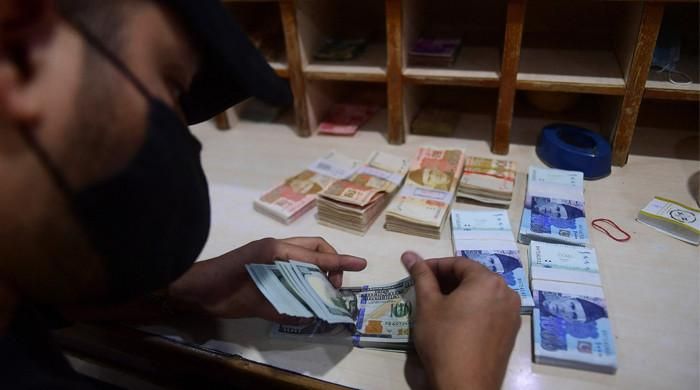The government is putting all its efforts into controlling non-profit spending as high interest rates increase current spending.
- The income surplus generated by the provinces also decreases.
- Increasing margin payments is a challenge for the government.
- The SBP's Monetary Policy Committee is scheduled to meet next week.
ISLAMABAD: Amid high interest rates, Pakistan's debt service in the form of margin on principal and outstanding loans increased by 74% in the first five months (July-November) of the current fiscal year compared to the same period last fiscal year. , reported News Thursday.
Furthermore, another challenge that has emerged on the fiscal front is the declining revenue surplus generated by the provinces. Revenue stood at Rs 107.9 billion in the first five months of the current fiscal year, compared to Rs 202.5 billion generated in the same period of the last financial year.
The main challenge facing the government is the increase in margin payments in response to high interest rates that have led to a significant increase in current expenditure. However, the government is trying its best to control spending without margin, as evidenced by the rise in primary surplus during July-November FY24.
The SBP's Monetary Policy Committee is scheduled to meet next week and if the interest rate increases, debt servicing will consume more revenue in the coming months and create difficulties for the Finance Ministry.
During July-November FY2024, total expenditure grew 43% to Rs 4,831,000 crore as against Rs 3,367,400 crore last year. Current spending grew by 46% mainly due to a significant increase in margin payments which increased by 74% during the first five months of the current fiscal year, while non-margin spending saw only 20% growth due to restrictions of the government. spent.
The overall fiscal deficit stood at 1.3% of gross domestic product (GDP), equivalent to Rs 1,375.4 billion in the July-November period of fiscal 2024, up from Rs 1,168.6 billion ( 1.4% of GDP) for the same period of the last financial year. . However, the overall primary balance maintained a surplus of Rs 1,542.1 billion in the first five months of the current fiscal year, against Rs 511 billion in the same period of the last financial year.
The government had agreed with the IMF to restrict the primary surplus to Rs 397.2 billion or 0.4% of GDP for the current fiscal year.
The fiscal deficit narrowed to 1.3% of GDP (Rs 1,375.4 billion) in July-November FY2024 from 1.4% of GDP (Rs 1,168.6 billion) last year. The overall fiscal deficit for fiscal year 2024 is budgeted at 6.5% of GDP. The primary surplus improved thanks to the contained growth in spending without a profit margin. It recorded a surplus of Rs 1,542.1 billion (1.5% of GDP) during July-November FY2024 against the surplus of Rs 511.0 billion (0.6% of GDP) last year. During July-November FY2024, net income improved 68% to Rs 3,347.7 billion from Rs 1,996.5 billion last year. This performance is largely attributed to a sharp increase in non-tax collection of 114% (Rs 1,757.2 billion against Rs 822,400 billion last year) and tax collection of 30% (3,484.7 billion crore as against Rs 2,688.4 billion last year).
FBR tax collection increased 30.3% to Rs 4,469 crore during FY 2024 from July to December, up from Rs 3,429 crore last year. During the period, the FBR collected more than the allocated target of Rs 4,425 billion, thus surpassing Rs 44 billion. The revenue performance indicates that tax policy and administrative measures are bearing fruit in terms of continuous improvement in revenue collection.
Originally published in The News












